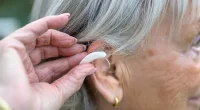Yes, some risk factors for Parkinson’s Disease are avoidable. Researchers have identified several avoidable risk factors for Parkinson’s Disease (PD) in a recent study published in Npj Parkinson’s Disease. This study is significant because it provides valuable information for developing strategies to prevent PD and reduce its global burden.
Parkinson’s disease is a chronic nervous system disorder that affects movement. Its cause is unknown but believed to involve both genetic and environmental factors. Common symptoms include tremors, stiffness, slowness of movement, and balance problems.
Recent research shows Researchers have identified several avoidable risk factors and there’s no cure, but treatments manage symptoms. These include medications, surgery, exercise, physical & occupational therapy. Living with Parkinson’s is possible with proper care and support.
About The Study
Background:
- PD is a progressive neurological disorder with no known cure.
- Identifying and eliminating risk factors is considered the most effective way to reduce PD incidence.
- Previous studies focused on relative risk or odds ratio of PD, but not the disease burden associated with each risk factor.
Study Design:
- This study aimed to estimate the population attributable fraction (PAF) of various PD risk factors.
- PAF represents the proportion of cases that could be prevented by controlling the risk factors.
- 981 participants with PD and 485 healthy controls were recruited from the Deep South of the United States.
- Participants completed questionnaires to assess environmental, lifestyle, and familial risk factors.
Key Findings:
- Higher prevalence of weight loss, constipation, and REM sleep behavior disorder (RBD) was observed in the PD group.
- Family history of PD and exposure to pesticides/herbicides were identified as risk factors for both genders.
- Repeated blows to the head during sports or combat were linked to increased PD risk in men.
- Exposure to military-grade chemicals was also found to be a risk factor for men.
- The PAF for modifiable risk factors was calculated.
- Pesticide/herbicide exposure, military-related chemicals, and blows to the head were estimated to contribute to 30% of PD cases in men.
- These findings are consistent with previous studies suggesting higher rates of neurological disorders in athletes, particularly those involved in collision sports.
Identified risk factors:
- Family history of PD
- Exposure to pesticides/herbicides
- Mild/moderate traumatic brain injury (MTBI) requiring hospitalization or causing concussion (link only observed in men)
- Repeated blows to the head during sports or combat (link only observed in men)
- Exposure to military-grade chemicals (higher risk in men)
PAF for modifiable risk factors:
- Pesticide/herbicide exposure: 17% in men, 23% in women
- Military chemical exposure: 6% in men
- Blows to the head: 10% in men
- Overall, these factors were responsible for 30% of PD cases in men.
Limitations:
- The study was unable to identify specific chemicals responsible for PD.
- Self-reported exposure data might not capture all sources of exposure.
- PAF estimates are population-specific and may vary depending on the prevalence of risk factors.
Conclusions:
- This study provides evidence that repeated blows to the head, a common occurrence in collision sports, can increase PD risk.
- Several modifiable risk factors for PD were identified in both men and women.
- By eliminating these risk factors, PD incidence can potentially be prevented in some populations.
Further Research:
- Future studies are needed to investigate the specific chemicals responsible for PD.
- More accurate exposure assessment methods are required to improve PAF estimates.
- Studies across diverse populations are necessary to understand the generalizability of these findings.
Additional Points:
- The study’s findings align with previous research indicating a higher risk of neurological disorders in athletes.
- Despite the limitations, the study provides valuable insights into the potential for preventing PD by addressing modifiable risk factors.
Continue to check our website soundhealthandlastingwealth.com for more articles of this kind. And, please use our comment section as well, we would love to hear from you.









